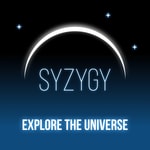James Webb Space Telescope – Details, episodes & analysis
Podcast details
Technical and general information from the podcast's RSS feed.

James Webb Space Telescope
QP-1
Frequency: 1 episode/15d. Total Eps: 47

- What is the James Webb Space Telescope?
- Why is it so important?
- What are its goals?
- How does it work?
- What kind of discoveries can we expect from it?
- What are the latest images and data from the James Webb Space Telescope?
- What have we learned about the universe so far?
- What are some of the most exciting discoveries yet to come?
- What are exoplanets?
- How can the James Webb Space Telescope help us find and study them?
- What are some of the most promising exoplanet candidates?
- Could the James Webb Space Telescope help us find evidence of life beyond Earth?
- What can the James Webb Space Telescope tell us about the early universe?
- How did the first stars and galaxies form?
- What role did dark matter and dark energy play in the evolution of the universe?
- How will the James Webb Space Telescope change the way we study the universe?
- What are some of the most exciting scientific questions that it could answer?
- What can we expect from the next generation of space telescopes?
- How can the public get involved with the James Webb Space Telescope?
- Where can you find images, data, and other information about the telescope?
- How can you talk to scientists and engineers who are working on the project?
- What role will the James Webb Space Telescope play in future space exploration missions?
- How can it help us prepare for human missions to Mars and beyond?
- What are the ethical implications of the James Webb Space Telescope and other powerful space telescopes?
- What can the James Webb Space Telescope teach us about our place in the universe?
- Are we alone?
- What is our future as a spacefaring species?
Recent rankings
Latest chart positions across Apple Podcasts and Spotify rankings.
Apple Podcasts
🇨🇦 Canada - astronomy
29/07/2025#15🇬🇧 Great Britain - astronomy
29/07/2025#17🇺🇸 USA - astronomy
29/07/2025#14🇫🇷 France - astronomy
29/07/2025#89🇨🇦 Canada - astronomy
28/07/2025#11🇬🇧 Great Britain - astronomy
28/07/2025#10🇺🇸 USA - astronomy
28/07/2025#15🇫🇷 France - astronomy
28/07/2025#89🇨🇦 Canada - astronomy
27/07/2025#27🇬🇧 Great Britain - astronomy
27/07/2025#25
Spotify
No recent rankings available
Shared links between episodes and podcasts
Links found in episode descriptions and other podcasts that share them.
See allRSS feed quality and score
Technical evaluation of the podcast's RSS feed quality and structure.
See allScore global : 59%
Publication history
Monthly episode publishing history over the past years.
NASA’s Webb Investigates Eternal Sunrises, Sunsets on Distant World
vendredi 19 juillet 2024 • Duration 05:37
Using Webb’s NIRSpec (Near-Infrared Spectrograph), astronomers confirmed a temperature difference between the eternal morning and eternal evening on WASP-39 b, with the evening appearing hotter by roughly 300 Fahrenheit degrees (about 200 Celsius degrees). They also found evidence for different cloud cover, with the forever morning portion of the planet being likely cloudier than the evening.
Astronomers analyzed the 2- to 5-micron transmission spectrum of WASP-39 b, a technique that studies the exoplanet’s terminator, the boundary that separates the planet’s dayside and nightside. A transmission spectrum is made by comparing starlight filtered through a planet’s atmosphere as it moves in front of the star, to the unfiltered starlight detected when the planet is beside the star. When making that comparison, researchers can get information about the temperature, composition, and other properties of the planet’s atmosphere.
“WASP-39 b has become a sort of benchmark planet in studying the atmosphere of exoplanets with Webb,” said Néstor Espinoza, an exoplanet researcher at the Space Telescope Science Institute and lead author on the study. “It has an inflated, puffy atmosphere, so the signal coming from starlight filtered through the planet’s atmosphere is quite strong.”
Previously published Webb spectra of WASP-39b’s atmosphere, which revealed the presence of carbon dioxide, sulfur dioxide, water vapor, and sodium, represent the entire day/night boundary – there was no detailed attempt to differentiate between one side and the other.
Now, the new analysis builds two different spectra from the terminator region, essentially splitting the day/night boundary into two semicircles, one from the evening, and the other from the morning. Data reveals the evening as significantly hotter, a searing 1,450 degrees Fahrenheit (800 degrees Celsius), and the morning a relatively cooler 1,150 degrees Fahrenheit (600 degrees Celsius).
“It’s really stunning that we are able to parse this small difference out, and it’s only possible due Webb’s sensitivity across near-infrared wavelengths and its extremely stable photometric sensors,” said Espinoza. “Any tiny movement in the instrument or with the observatory while collecting data would have severely limited our ability to make this detection. It must be extraordinarily precise, and Webb is just that.”
Extensive modeling of the data obtained also allows researchers to investigate the structure of WASP-39 b’s atmosphere, the cloud cover, and why the evening is hotter. While future work by the team will study how the cloud cover may affect temperature, and vice versa, astronomers confirmed gas circulation around the planet as the main culprit of the temperature difference on WASP-39 b.
On a highly irradiated exoplanet like WASP-39 b that orbits relatively close to its star, researchers generally expect the gas to be moving as the planet rotates around its star: Hotter gas from the dayside should move through the evening to the nightside via a powerful equatorial jet stream. Since the temperature difference is so extreme, the air pressure difference would also be significant, which in turn would cause high wind speeds.
Using General Circulation Models, 3-dimensional models similar to the ones used to predict weather patterns on Earth, researchers found that on WASP-39 b the prevailing winds are likely moving from the night side across the morning terminator, around the dayside, across the evening terminator and then around the nightside. As a result, the morning side of the terminator is cooler than the evening side. In other words, the morning side gets slammed with winds of air that have been cooled on the nightside, while the evening is hit by winds of air heated on the dayside. Research suggests the wind speeds on WASP-39 b can reach thousands of miles an hour!
“This analysis is also particularly interesting because you’re getting 3D information on the planet that you weren’t getting before,” added Espinoza. “Because we can tell that the evening edge is hotter, that means it’s a little puffier. So, theoretically, there is a small swell at the terminator approaching the nightside of the planet.”
The team’s results have been published in Nature.
The researchers will now look to use the same method of analysis to study atmospheric differences of other tidally locked hot Jupiters, as part of Webb Cycle 2 General Observers Program 3969.
WASP-39 b was among the first targets analyzed by Webb as it began regular science operations in 2022. The data in this study was collected under Early Release Science program 1366, designed to help scientists quickly learn how to use the telescope’s instruments and realize its full science potential.
Galaxies Actively Forming in Early Universe Caught Feeding on Cold Gas
mardi 28 mai 2024 • Duration 03:05
“These galaxies are like sparkling islands in a sea of otherwise neutral, opaque gas,” explained Kasper Heintz, the lead author and an assistant professor of astrophysics at the Cosmic Dawn Center (DAWN) at the University of Copenhagen in Denmark. “Without Webb, we would not be able to observe these very early galaxies, let alone learn so much about their formation.”
“We’re moving away from a picture of galaxies as isolated ecosystems. At this stage in the history of the universe, galaxies are all intimately connected to the intergalactic medium with its filaments and structures of pristine gas,” added Simone Nielsen, a co-author and PhD student also based at DAWN.
The universe was a very different place several hundred million years after the big bang during a period known as the Era of Reionization. Gas between stars and galaxies was largely opaque. Gas throughout the universe only became fully transparent around 1 billion years after the big bang. Galaxies’ stars contributed to heating and ionizing the gas around them, causing the gas to eventually become completely transparent.
By matching Webb’s data to models of star formation, the researchers also found that these galaxies primarily have populations of young stars. “The fact that we are seeing large gas reservoirs also suggests that the galaxies have not had enough time to form most of their stars yet,” Watson added.
This is Only the Start
Webb is not only meeting the mission goals that drove its development and launch – it is exceeding them. “Images and data of these distant galaxies were impossible to obtain before Webb,” explained Gabriel Brammer, a co-author and associate professor at DAWN. “Plus, we had a good sense of what we were going to find when we first glimpsed the data – we were almost making discoveries by eye.”
There remain many more questions to address. Where, specifically, is the gas? How much is located near the centers of the galaxies – or in their outskirts? Is the gas pristine or already populated by heavier elements? Significant research lies ahead. “The next step is to build large statistical samples of galaxies and quantify the prevalence and prominence of their features in detail,” Heintz said.
The researchers’ findings were possible thanks to Webb’s Cosmic Evolution Early Release Science (CEERS) Survey, which includes spectra of distant galaxies from the telescope’s NIRSpec (Near-Infrared Spectrograph), and was released immediately to support discoveries like this as part of Webb’s Early Release Science (ERS) program.
James Webb - Planet Uranus - NASA
vendredi 22 décembre 2023 • Duration 03:20
James Webb Update for December 18 2023
mardi 19 décembre 2023 • Duration 01:46
James Webb update for 11-20-2023
lundi 20 novembre 2023 • Duration 02:52
Amid the estimated 500,000 stars in the image is a cluster of protostars – stars that are still forming and gaining mass – producing outflows that glow like a bonfire in the midst of an infrared-dark cloud. At the heart of this young cluster is a previously known, massive protostar over 30 times the mass of our Sun. The cloud the protostars are emerging from is so dense that the light from stars behind it cannot reach Webb, making it appear less crowded when in fact it is one of the most densely packed areas of the image. Smaller infrared-dark clouds dot the image, looking like holes in the starfield. That’s where future stars are forming.
Webb’s NIRCam (Near-Infrared Camera) instrument also captured large-scale emission from ionized hydrogen surrounding the lower side of the dark cloud, shown cyan-colored in the image. Typically, Crowe says, this is the result of energetic photons being emitted by young massive stars, but the vast extent of the region shown by Webb is something of a surprise that bears further investigation. Another feature of the region that Crowe plans to examine further is the needle-like structures in the ionized hydrogen, which appear oriented chaotically in many directions.
“The galactic center is a crowded, tumultuous place. There are turbulent, magnetized gas clouds that are forming stars, which then impact the surrounding gas with their outflowing winds, jets, and radiation,” said Rubén Fedriani, a co-investigator of the project at the Instituto Astrofísica de Andalucía in Spain. “Webb has provided us with a ton of data on this extreme environment, and we are just starting to dig into it.”
Around 25,000 light-years from Earth, the galactic center is close enough to study individual stars with the Webb telescope, allowing astronomers to gather unprecedented information on how stars form, and how this process may depend on the cosmic environment, especially compared to other regions of the galaxy. For example, are more massive stars formed in the center of the Milky Way, as opposed to the edges of its spiral arms?
“The image from Webb is stunning, and the science we will get from it is even better,” Crowe said. “Massive stars are factories that produce heavy elements in their nuclear cores, so understanding them better is like learning the origin story of much of the universe.”
James Webb update from NASA - Crab Nebula
mardi 31 octobre 2023 • Duration 05:01
From the NASA Webb Telescope Team
And for October 30, 2023
NASA’s James Webb Space Telescope has gazed at the Crab Nebula, a supernova remnant located 6,500 light-years away in the constellation Taurus. Since the recording of this energetic event in 1054 CE by 11th-century astronomers, the Crab Nebula has continued to draw attention and additional study as scientists seek to understand the conditions, behavior, and after-effects of supernovae through thorough study of the Crab, a relatively nearby example.
Using Webb’s NIRCam (Near-Infrared Camera) and MIRI (Mid-Infrared Instrument), a team led by Tea Temim at Princeton University is searching for answers about the Crab Nebula’s origins.
“Webb’s sensitivity and spatial resolution allow us to accurately determine the composition of the ejected material, particularly the content of iron and nickel, which may reveal what type of explosion produced the Crab Nebula,” explained Temim.
At first glance, the general shape of the supernova remnant is similar to the optical wavelength image released in 2005 from NASA’s Hubble Space Telescope: In Webb’s infrared observation, a crisp, cage-like structure of fluffy gaseous filaments are shown in red-orange. However, in the central regions, emission from dust grains (yellow-white and green) is mapped out by Webb for the first time.
Additional aspects of the inner workings of the Crab Nebula become more prominent and are seen in greater detail in the infrared light captured by Webb. In particular, Webb highlights what is known as synchrotron radiation: emission produced from charged particles, like electrons, moving around magnetic field lines at relativistic speeds. The radiation appears here as milky smoke-like material throughout the majority of the Crab Nebula’s interior.
This feature is a product of the nebula’s pulsar, a rapidly rotating neutron star. The pulsar’s strong magnetic field accelerates particles to extremely high speeds and causes them to emit radiation as they wind around magnetic field lines. Though emitted across the electromagnetic spectrum, the synchrotron radiation is seen in unprecedented detail with Webb’s NIRCam instrument.
To locate the Crab Nebula’s pulsar heart, trace the wisps that follow a circular ripple-like pattern in the middle to the bright white dot in the center. Farther out from the core, follow the thin white ribbons of the radiation. The curvy wisps are closely grouped together, outlining the structure of the pulsar’s magnetic field, which sculpts and shapes the nebula.
At center left and right, the white material curves sharply inward from the filamentary dust cage’s edges and goes toward the neutron star’s location, as if the waist of the nebula is pinched. This abrupt slimming may be caused by the confinement of the supernova wind’s expansion by a belt of dense gas.
The wind produced by the pulsar heart continues to push the shell of gas and dust outward at a rapid pace. Among the remnant’s interior, yellow-white and green mottled filaments form large-scale loop-like structures, which represent areas where dust grains reside.
The search for answers about the Crab Nebula’s past continues as astronomers further analyze the Webb data and consult previous observations of the remnant taken by other telescopes. Scientists will have newer Hubble data to review within the next year or so from the telescope’s reimaging of the supernova remnant. This will mark Hubble’s first look at emission lines from the Crab Nebula in over 20 years, and will enable astronomers to more accurately compare Webb and Hubble’s findings.
Learn More: Crab Nebula
Want to learn more? Through NASA’s Universe of Learning, part of NASA’s Science Activation program, explore images of the Crab Nebula from other telescopes, a 3D visualization, data sonification, and hands-on activities. These resources and more information about supernova remnants and star lifecycles can be found at NASA’s Universe of Learning.
The James Webb Space Telescope is the world’s premier space science observatory. Webb is solving mysteries in our solar system, looking beyond to distant worlds around other stars, and probing the mysterious structures and origins of our universe and our place in it. Webb is an international program led by NASA with its partners, ESA (European Space Agency) and the Canadian Space Agency.
NASA’s Universe of Learning materials are based upon work supported by NASA under cooperative agreement award number NNX16AC65A to the Space Telescope Science Institute, working in partnership with Caltech/IPAC, Center for Astrophysics | Harvard & Smithsonian, and Jet Propulsion Laboratory.
James Webb Space Telescope - NASA update for 10-25-2023
mercredi 25 octobre 2023 • Duration 08:49
Image: NASA, ESA, CSA, STScI, A. Levan (Radboud University and University of Warwick).
Other elements near tellurium on the periodic table – like iodine, which is needed for much of life on Earth – are also likely to be present among the kilonova’s ejected material. A kilonova is an explosion produced by a neutron star merging with either a black hole or with another neutron star.“Just over 150 years since Dmitri Mendeleev wrote down the periodic table of elements, we are now finally in the position to start filling in those last blanks of understanding where everything was made, thanks to Webb,” said Andrew Levan of Radboud University in the Netherlands and the University of Warwick in the UK, lead author of the study.While neutron star mergers have long been theorized as being the ideal “pressure cookers” to create some of the rarer elements substantially heavier than iron, astronomers have previously encountered a few obstacles in obtaining solid evidence.Long Gamma-Ray BurstKilonovae are extremely rare, making it difficult to observe these events. Short gamma-ray bursts (GRBs), traditionally thought to be those that last less than two seconds, can be byproducts of these infrequent merger episodes. (In contrast, long gamma-ray bursts may last several minutes and are usually associated with the explosive death of a massive star.)The case of GRB 230307A is particularly remarkable. First detected by Fermi in March, it is the second brightest GRB observed in over 50 years of observations, about 1,000 times brighter than a typical gamma-ray burst that Fermi observes. It also lasted for 200 seconds, placing it firmly in the category of long duration gamma-ray bursts, despite its different origin.“This burst is way into the long category. It’s not near the border. But it seems to be coming from a merging neutron star,” added Eric Burns, a co-author of the paper and member of the Fermi team at Louisiana State University.Opportunity: Telescope CollaborationThe collaboration of many telescopes on the ground and in space allowed scientists to piece together a wealth of information about this event as soon as the burst was first detected. It is an example of how satellites and telescopes work together to witness changes in the universe as they unfold. After the first detection, an intensive series of observations from the ground and from space, including with Swift, swung into action to pinpoint the source on the sky and track how its brightness changed. These observations in the gamma-ray, X-ray, optical, infrared, and radio showed that the optical/infrared counterpart was faint, evolved quickly, and became very red – the hallmarks of a kilonova.“This type of explosion is very rapid, with the material in the explosion also expanding swiftly,” said Om Sharan Salafia, a co-author of the study at the INAF – Brera Astronomical Observatory in Italy. “As the whole cloud expands, the material cools off quickly and the peak of its light becomes visible in infrared, and becomes redder on timescales of days to weeks.”Image: Killanova – Webb vs ModelThis graphic presentation compares the spectral data of GRB 230307A’s kilonova as observed by NASA’s James Webb Space Telescope and a kilonova model. Both show a distinct peak in the region of the spectrum associated with tellurium, with the area shaded in red. The detection of tellurium, which is rarer than platinum on Earth, marks Webb’s first direct look at an individual heavy element from a kilonova.
Illustration: NASA, ESA, CSA, Joseph Olmsted (STScI).
At later times it would have been impossible to study this kilonova from the ground, but these were the perfect conditions for Webb’s NIRCam (Near-Infrared Camera) and NIRSpec (Near-Infrared Spectrograph) instruments to observe this tumultuous environment. The spectrum has broad lines that show the material is ejected at high speeds, but one feature is clear: light emitted by tellurium, an element rarer than platinum on Earth.The highly sensitive infrared capabilities of Webb helped scientists identify the home address of the two neutron stars that created the kilonova: a spiral galaxy about 120,000 light-years away from the site of the merger.Prior to their venture, they were once two normal massive stars that formed a binary system in their home spiral galaxy. Since the duo was gravitationally bound, both stars were launched together on two separate occasions: when one among the pair exploded as a supernova and became a neutron star, and when the other star followed suit.In this case, the neutron stars remained as a binary system despite two explosive jolts and were kicked out of their home galaxy. The pair traveled approximately the equivalent of the Milky Way galaxy’s diameter before merging several hundred million years later.Scientists expect to find even more kilonovae in the future due to the increasing opportunities to have space and ground-based telescopes work in complementary ways to study changes in the universe. For example, while Webb can peer deeper into space than ever before, the remarkable field of view of NASA’s upcoming Nancy Grace Roman Space Telescope will enable astronomers to scout where and how frequently these explosions occur.“Webb provides a phenomenal boost and may find even heavier elements,” said Ben Gompertz, a co-author of the study at the University of Birmingham in the UK. “As we get more frequent observations, the models will improve and the spectrum may evolve more in time. Webb has certainly opened the door to do a lot more, and its abilities will be completely transformative for our understanding of the universe.”These findings have been published in the journal Nature.The James Webb Space Telescope is the world’s premier space science observatory. Webb is solving mysteries in our solar system, looking beyond to distant worlds around other stars, and probing the mysterious structures and origins of our universe and our place in it. Webb is an international program led by NASA with its partners, ESA (European Space Agency) and the Canadian Space Agency.
James Webb Space Telescope - Update for 10-09-2023 - 1st images released
lundi 9 octobre 2023 • Duration 03:12
James Webb Telescope - How to get Involved
jeudi 21 septembre 2023 • Duration 02:07
There are many ways for the public to get involved with the James Webb Space Telescope. One way is to follow the telescope's social media accounts. The James Webb Space Telescope has a presence on Twitter, Facebook, Instagram, and YouTube. On these platforms, you can find the latest news and updates about the telescope, as well as images, videos, and other educational resources.
Another way to get involved is to participate in citizen science projects. Citizen science projects are research projects that rely on the participation of volunteers to collect and analyze data. There are a number of citizen science projects that are related to the James Webb Space Telescope. For example, the Galaxy Zoo project is a citizen science project that allows volunteers to classify galaxies from images taken by the James Webb Space Telescope.
If you would like to learn more about the James Webb Space Telescope, you can also visit the telescope's website. The James Webb Space Telescope website has a wealth of information about the telescope, its mission, and its science goals. You can also find images, data, and other resources on the website.
Finally, if you're interested in talking to scientists and engineers who are working on the James Webb Space Telescope, you can attend public events or participate in online Q&A sessions. The James Webb Space Telescope team often hosts public events and online Q&A sessions to share information about the telescope and answer questions from the public.
You can find information about upcoming public events and online Q&A sessions on the James Webb Space Telescope website.
I hope this episode has given you some ideas about how you can get involved with the James Webb Space Telescope. The James Webb Space Telescope is a truly amazing telescope, and it's an exciting time to be involved in the project.
Reminder: Please like, comment, and subscribe to The James Webb Space Telescope podcast so you never miss an episode!
The James Webb Space Telescope and the Future of Astronomy
lundi 18 septembre 2023 • Duration 02:34
Today, we're going to talk about the James Webb Space Telescope and the future of astronomy. This revolutionary telescope is set to launch later this year, and it has the potential to change the way we study the universe.
How will the James Webb Space Telescope change the way we study the universe?
The James Webb Space Telescope is the most powerful telescope ever built. It is much larger and more sensitive than the Hubble Space Telescope, and it will be able to see objects that are too faint and distant for Hubble to see.
Webb will also be able to see in infrared light, which is invisible to the human eye. This will allow it to see through the dust and gas that obscure objects in visible light.
As a result of these capabilities, Webb will be able to:
Study the first galaxies and stars that formed after the Big Bang
Look for exoplanets and study their atmospheres
Observe the formation and evolution of stars and planetary systems
Study the dark matter and dark energy that make up most of the universe
What are some of the most exciting scientific questions that it could answer?
The James Webb Space Telescope could answer some of the most fundamental questions about the universe, such as:
How did the first galaxies and stars form?
What are the conditions necessary for life to arise on other planets?
What is the nature of dark matter and dark energy?
Webb could also make unexpected discoveries that we can't even imagine yet.
What can we expect from the next generation of space telescopes?
The James Webb Space Telescope is just the beginning of a new era of space exploration. The next generation of space telescopes will be even more powerful and sophisticated, and they will allow us to see the universe in even greater detail.
For example, the Nancy Grace Roman Space Telescope is scheduled to launch in 2027. It will be able to map millions of galaxies and study dark matter and dark energy.
The Wide Field Infrared Survey Telescope is another next-generation telescope that is scheduled to launch in 2025. It will be able to study the evolution of galaxies and search for exoplanets.
These are just a few examples of the next generation of space telescopes that are currently in development. These telescopes will allow us to learn more about the universe than ever before.
The James Webb Space Telescope is a revolutionary telescope that has the potential to change the way we study the universe. It is just the beginning of a new era of space exploration, and we can expect to see even more amazing discoveries in the years to come.
Please like, comment, and subscribe to The James Webb Space Telescope podcast to never miss an episode.








